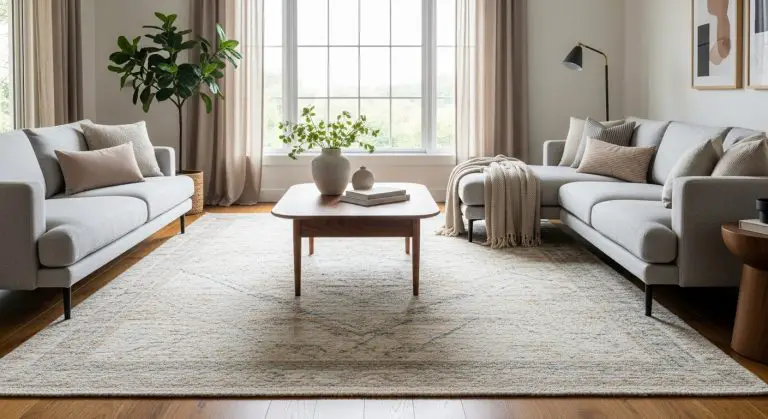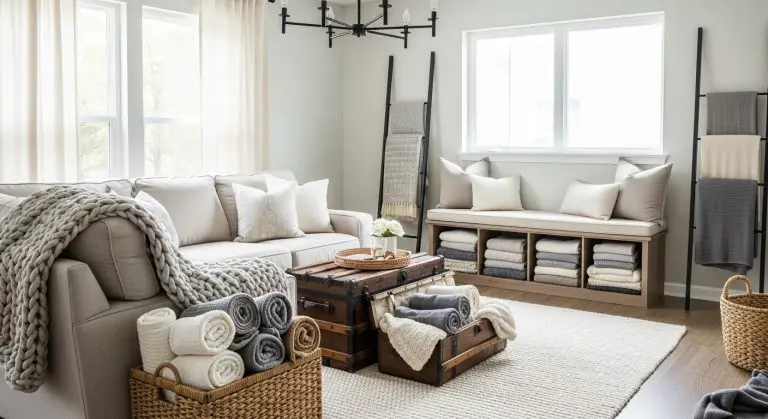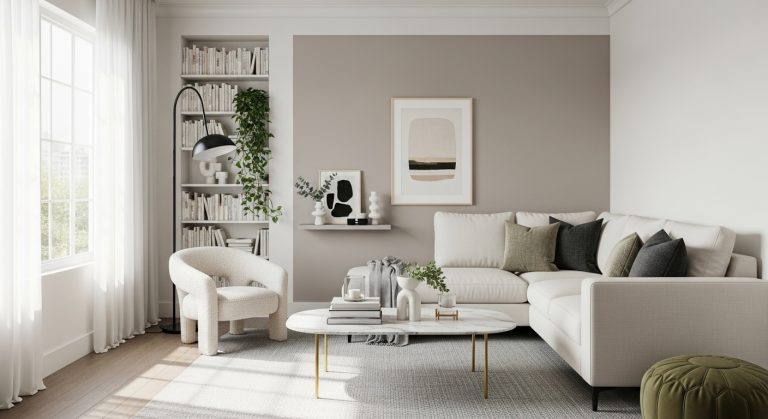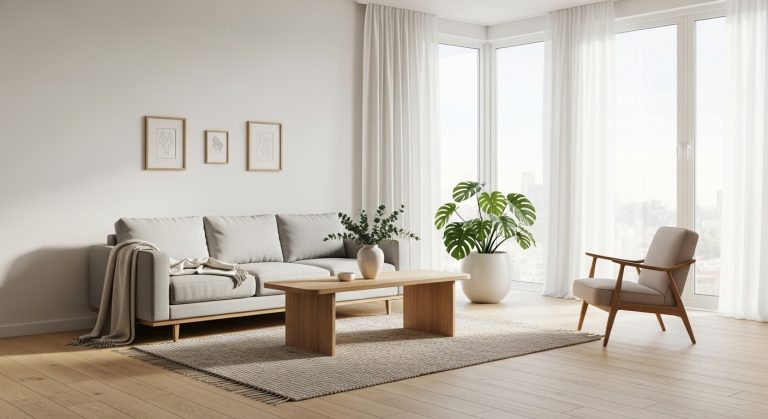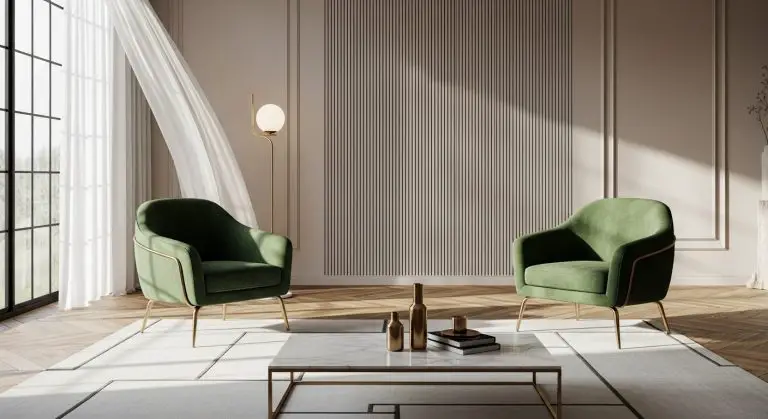Japandi Living Room Ideas: 15+ Minimalist & Cozy Design Inspiration
You know that feeling when you walk into a space and everything just… feels right? The air seems lighter, the mood calmer, and your eyes have somewhere to rest without being bombarded by a mess of colors and clutter. That’s exactly what a Japandi living room does.
It’s the sweet spot where Japanese minimalism and Scandinavian coziness meet for a design love story you’ll never get tired of. Minimal, but warm. Functional, but not cold. Basically, the home equivalent of a spa day.
1. Keep a Neutral Base (No, Beige is Not Boring)
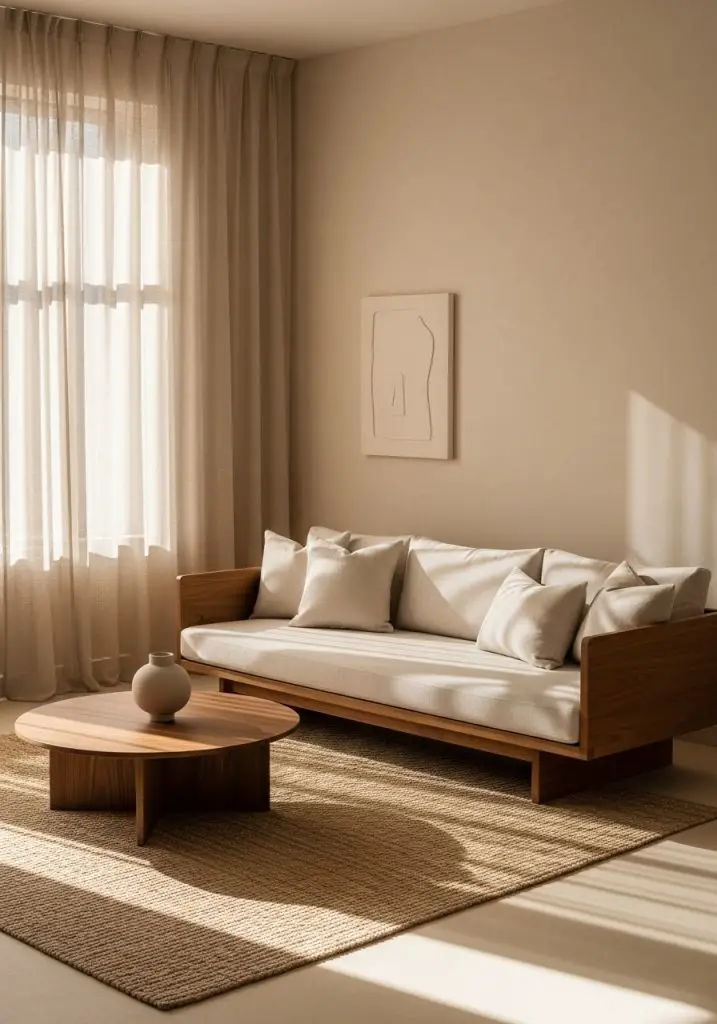
A Japandi living room lives on a neutral canvas — think warm whites, muted taupes, soft greys, and earthy browns. These shades create that soothing, “ahh” moment when you walk in.
My personal tip? Avoid stark white unless you’re going for “art gallery” rather than “cozy home.” Warm undertones keep the space from feeling sterile. And no, beige isn’t boring — it’s the perfect low-key backdrop that lets your textures and furniture shine.
2. Low-Profile Furniture = Instant Calm
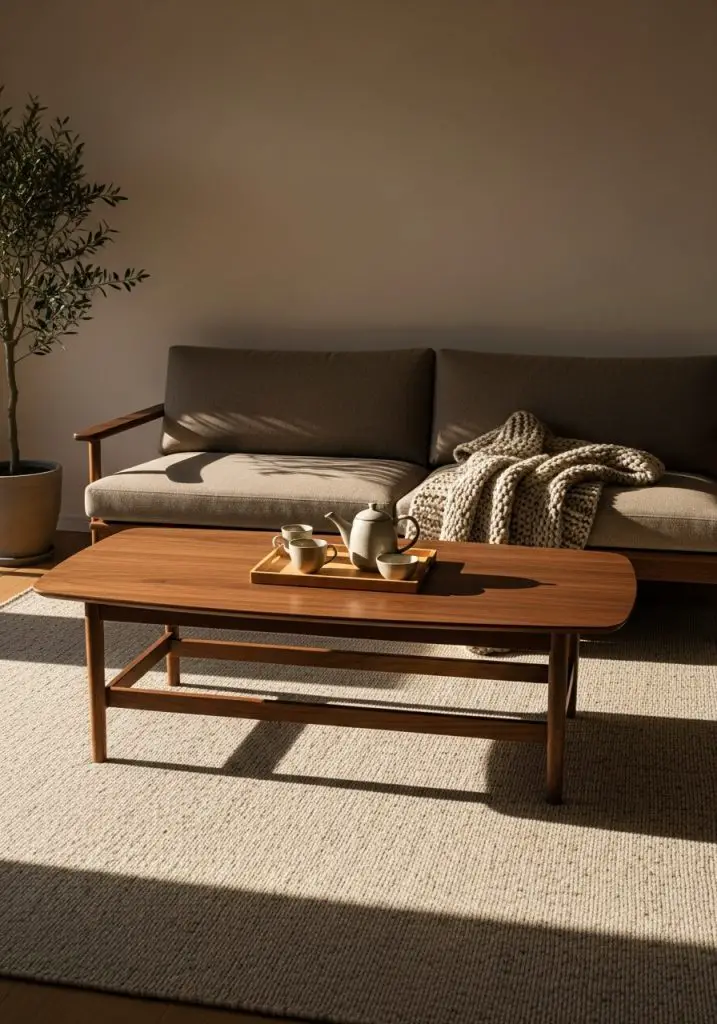
Japandi style loves furniture that sits closer to the ground — a nod to Japanese tradition. It instantly makes the space feel more grounded (literally).
A low, clean-lined sofa with simple legs or a futon-style couch can transform the whole vibe. Pair it with a low coffee table in oak or walnut, and suddenly your living room says, “Relax, nothing is urgent here.”
3. Natural Materials are Non-Negotiable

If you bring in plastics and high-gloss laminates, Japandi might just ghost you. Instead, choose:
- Solid wood (oak, ash, walnut)
- Linen or cotton upholstery
- Rattan and bamboo accents
- Ceramic vases or bowls
These textures not only look timeless but also feel better. IMO, nothing beats the satisfaction of running your hand across a smooth, solid wood table.
4. Declutter Like You Mean It
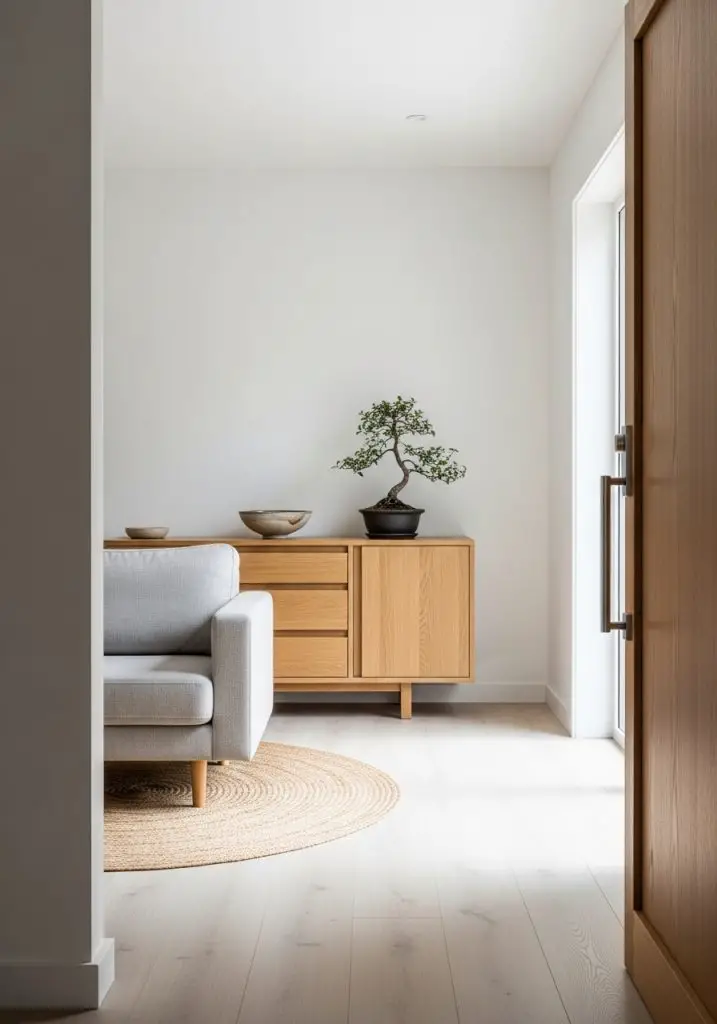
Here’s the brutal truth: you cannot have a Japandi living room and keep your “just in case” pile of stuff. This style is all about intentional living.
That doesn’t mean it has to feel empty — it just means every piece earns its place. Use clever storage (hello, ottoman with hidden compartment) so you can tuck away the chaos while keeping the room serene.
5. Layer Textures Like a Pro
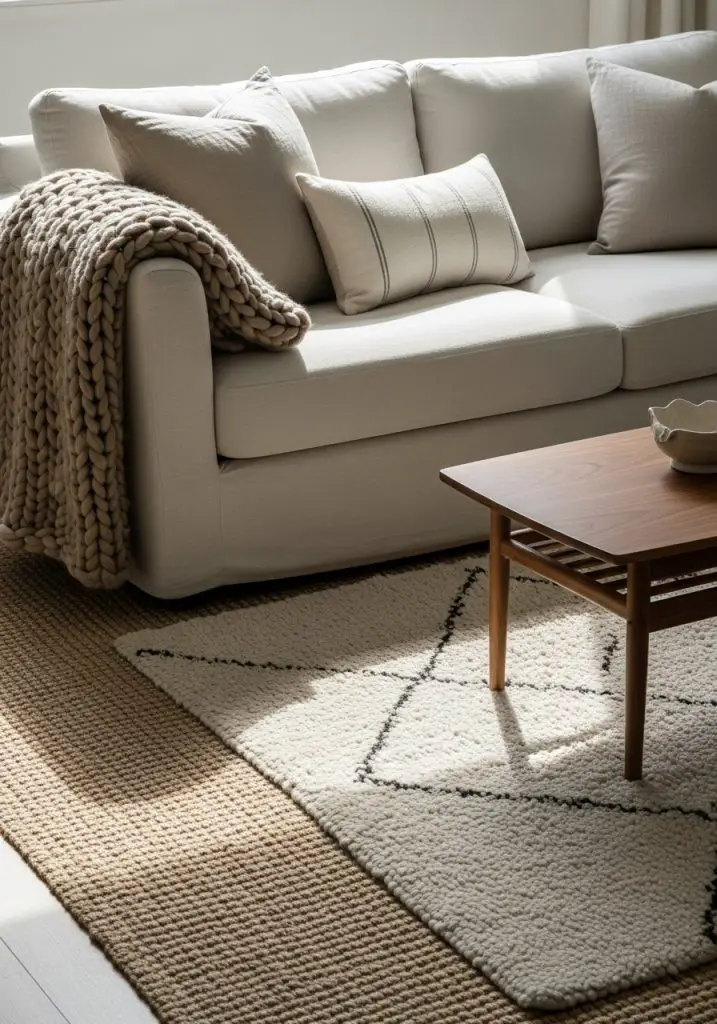
This is where the Scandinavian influence swoops in to soften the minimalism. Combine a linen sofa with a chunky knit throw, a jute rug, and a wool cushion.
It’s all about touchability. If your space looks great but feels like you shouldn’t sit down, you’ve missed the Japandi point.
6. Let Plants Play the Lead Role

Nature is a huge part of both Japanese and Scandinavian design. A well-placed monstera, olive tree, or even a humble pothos adds life without overwhelming the calm.
Pro tip: keep your pots neutral — matte ceramic, stone, or wood. The plant should be the star, not the neon plastic pot it came in.
7. Lighting is a Mood Game
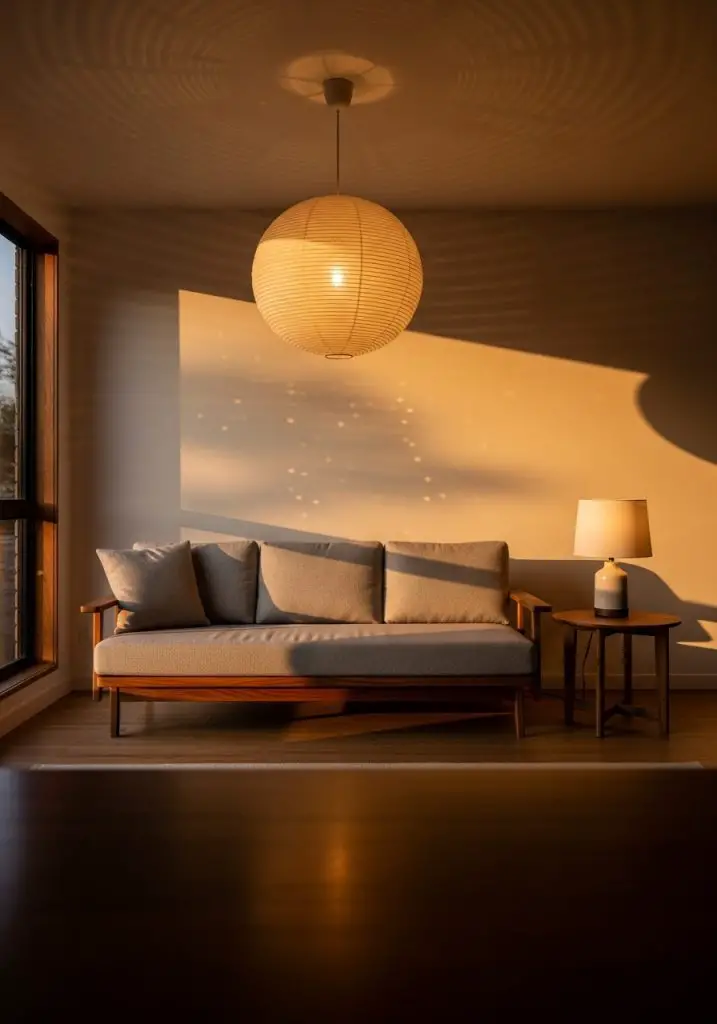
Natural light is gold here. Keep window treatments minimal — sheer linen curtains are perfect. At night, aim for soft, warm lighting with paper lanterns, wooden floor lamps, or wall sconces.
Avoid harsh overhead LEDs unless you enjoy the feeling of being interrogated. (Spoiler: most people don’t.)
8. Add Japanese-Inspired Details
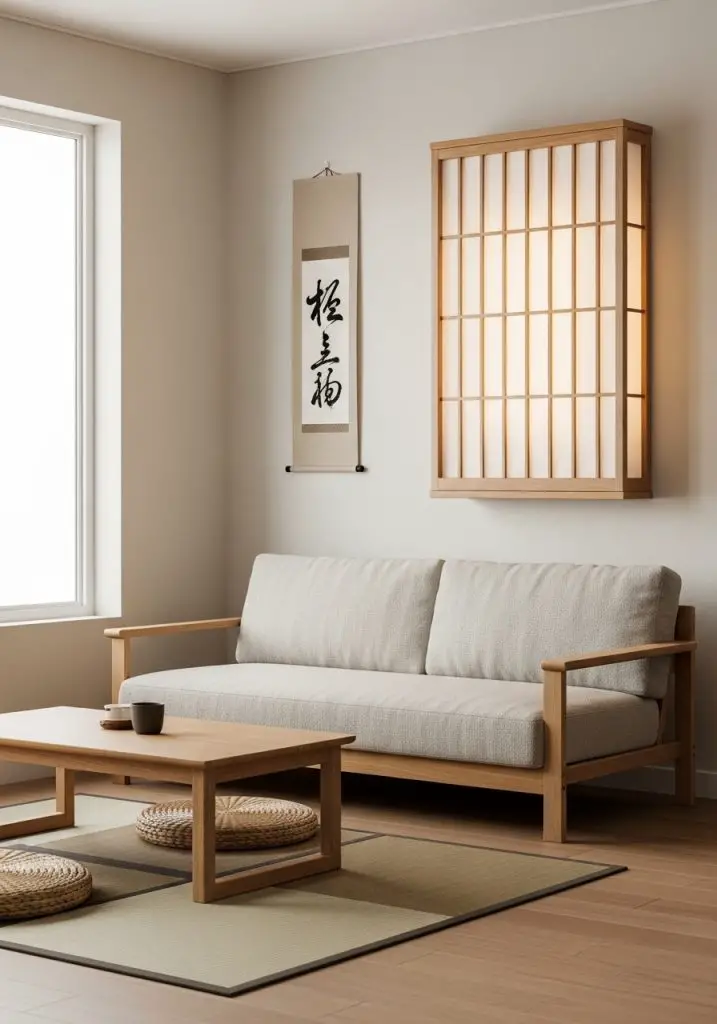
You don’t need to turn your living room into a tea house, but a few well-chosen accents go a long way. Think shoji screens, tatami-style mats, or a single piece of calligraphy art.
Just remember — Japandi is subtle. One piece per wall is plenty. More than that, and you’ve left Japandi and entered “theme park.”
9. Scandinavian Coziness is the Glue
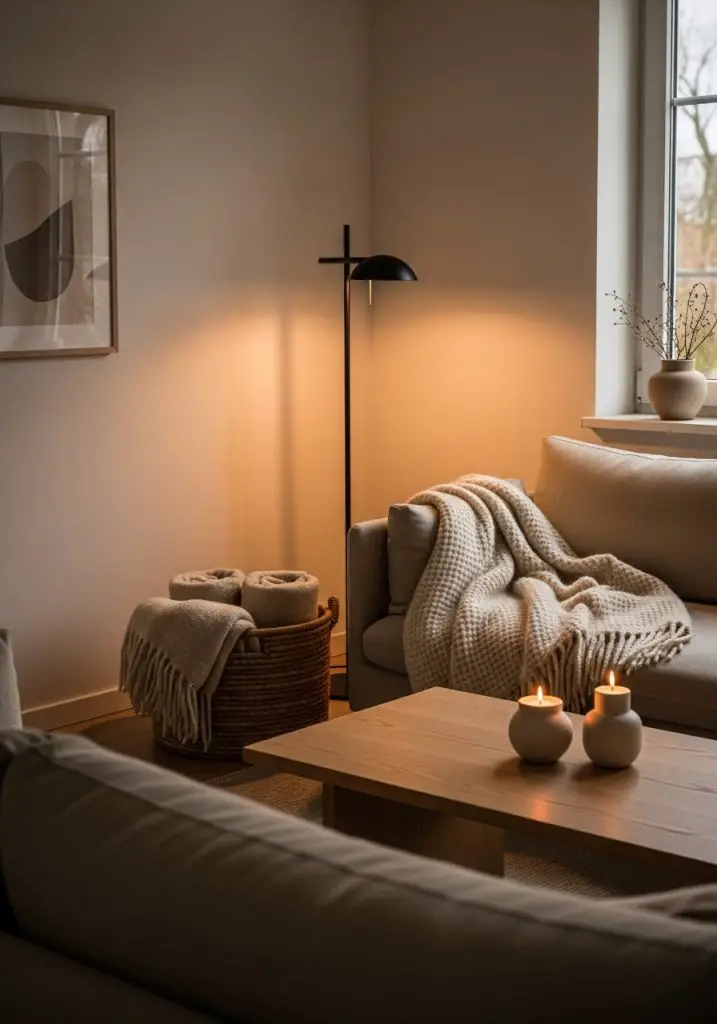
Without its Scandinavian half, Japandi can feel too stark. Add hygge elements: a soft throw over your sofa, candles in ceramic holders, and maybe a woven basket for blankets.
It’s about warmth you can see and feel — even if you’re just scrolling on your phone under a blanket. 🙂
10. Keep Art Minimal but Meaningful
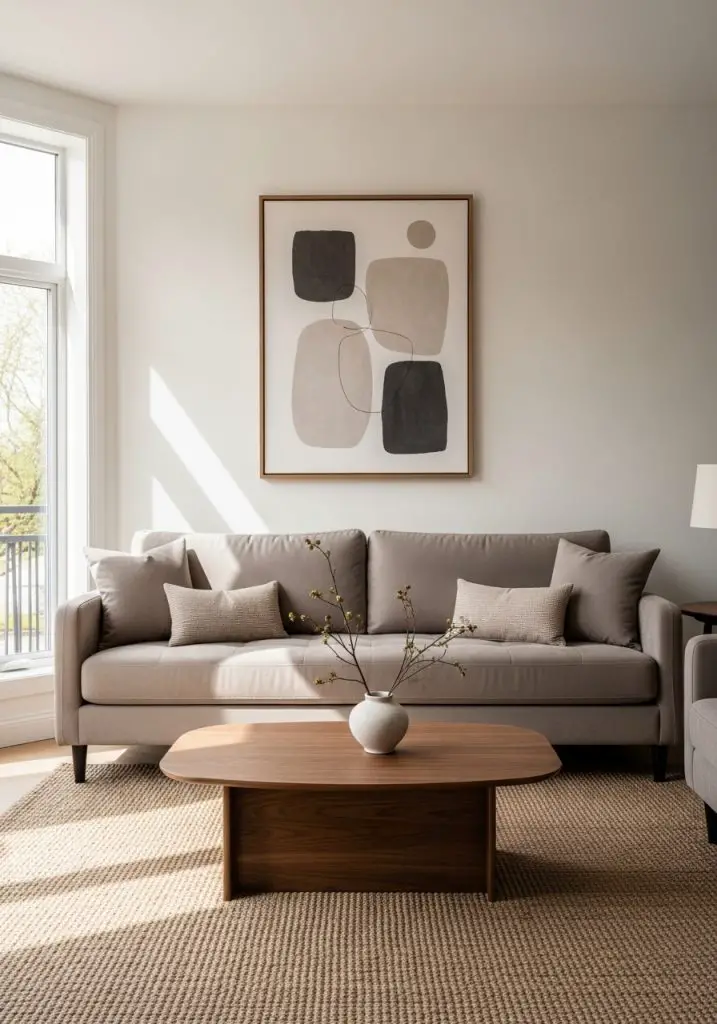
Japandi wall art is restrained but intentional. A single abstract print in muted tones, a black-and-white photograph, or a framed pressed leaf can make more impact than a cluttered gallery wall.
The idea is to give the eye space to breathe, not to create visual chaos.
11. Mix Organic and Geometric Shapes
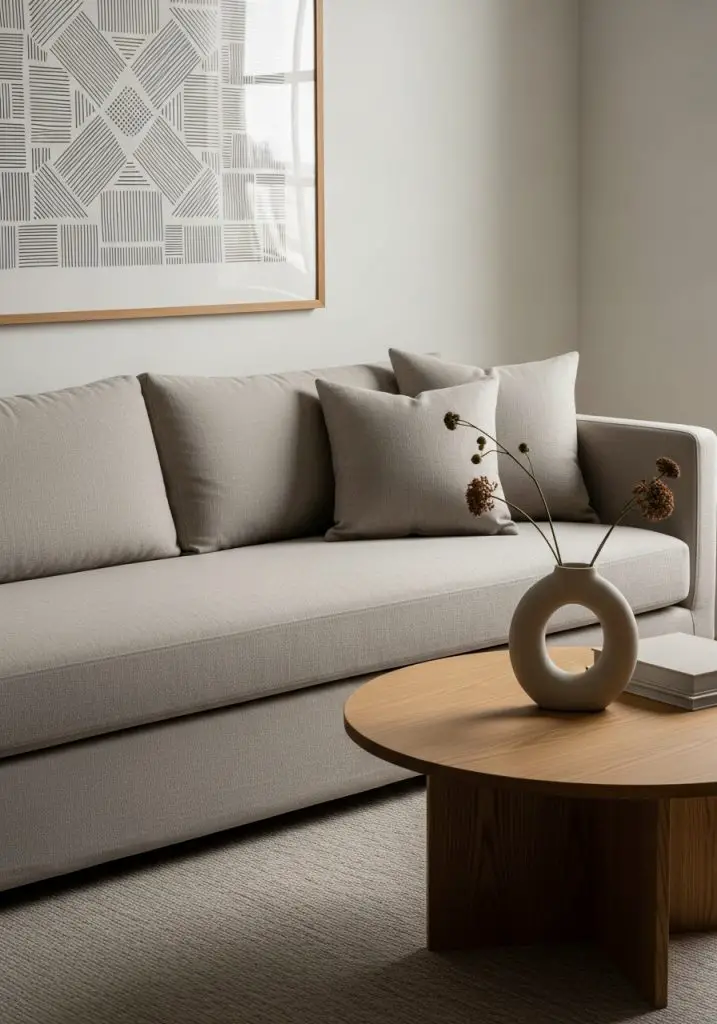
Japanese design leans toward organic, nature-inspired shapes, while Scandinavian design loves clean lines. The magic of Japandi is mixing the two.
Example: a round wooden coffee table next to a rectangular linen sofa. The balance feels effortless — like they’re friends who’ve known each other forever.
12. Keep Tech Subtle

Flat-screen TVs and speaker systems don’t exactly scream serenity. Hide them in a cabinet, mount them against a darker wall, or choose designs that blend in.
Bonus points if your coffee table doesn’t double as a remote-control graveyard.
13. Ground the Space with Rugs
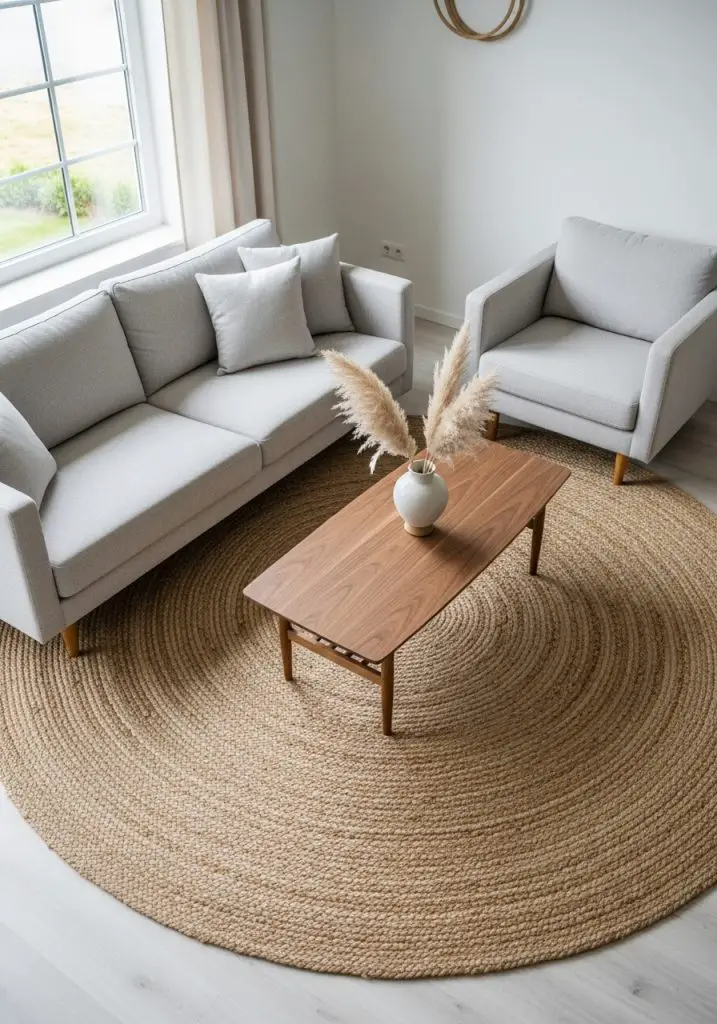
A textured rug — jute, wool, or a soft low-pile weave — anchors the furniture and adds warmth. Stick to neutral tones, or go for subtle geometric patterns if you need variety.
Pro tip: make sure the rug is large enough so at least the front legs of your sofa and chairs rest on it. Scale matters.
14. Use Contrast for Depth
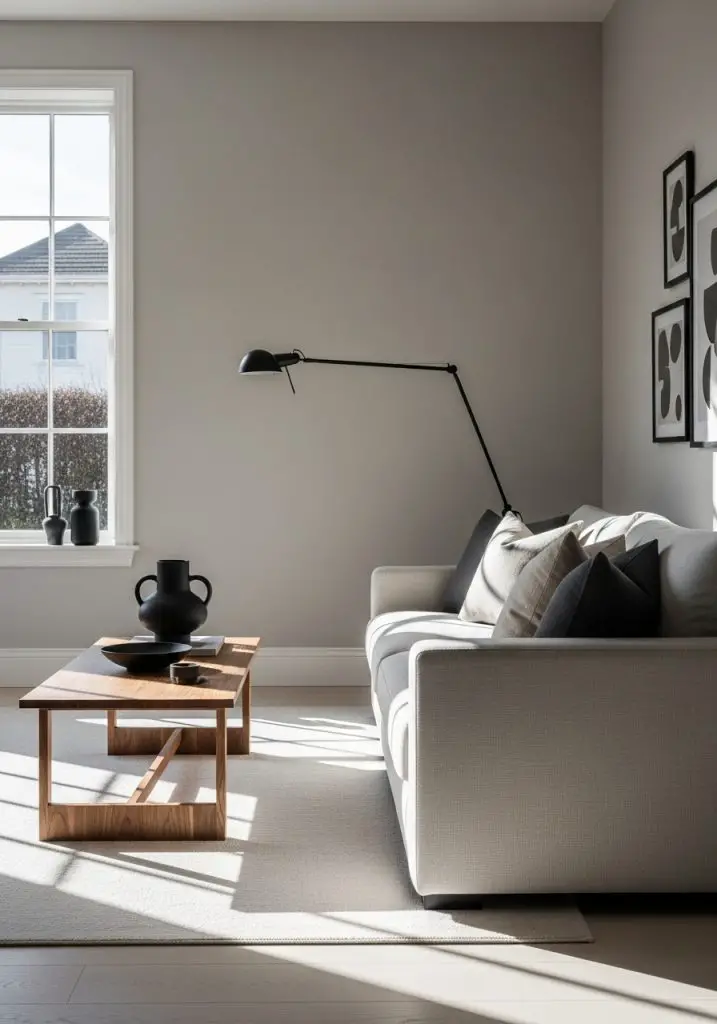
Japandi isn’t all light tones. Darker wood furniture or black accents add contrast and keep the room from feeling washed out.
A black metal floor lamp, charcoal cushions, or a walnut coffee table can instantly create depth without ruining the calm.
15. Embrace Imperfection
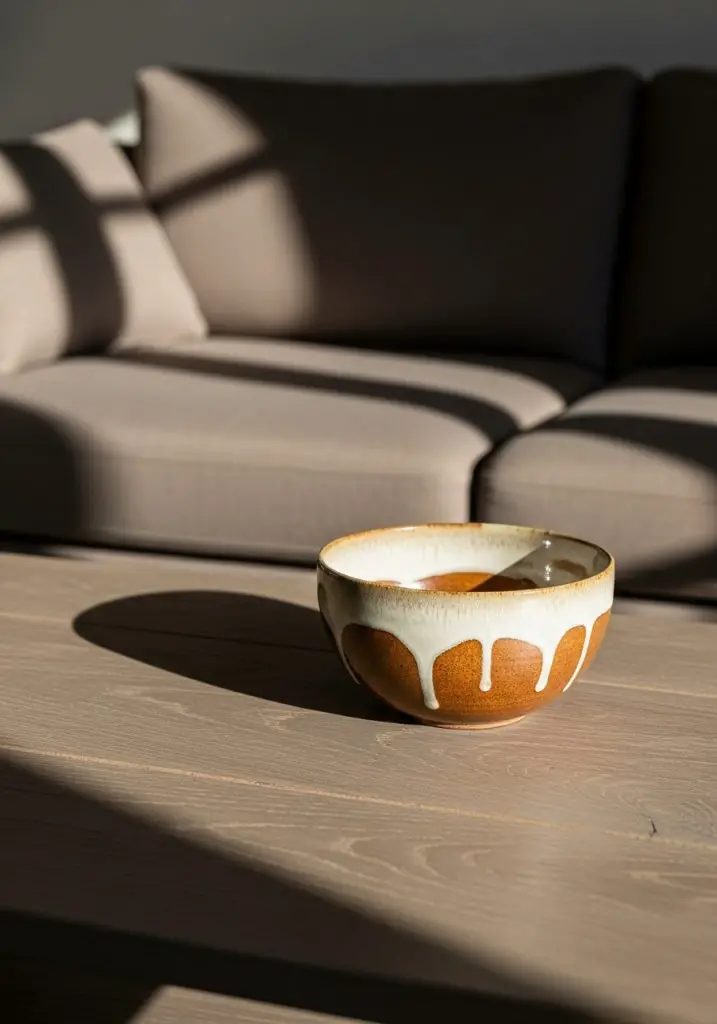
Japanese wabi-sabi meets Scandinavian comfort in the best way when you stop aiming for perfection. A slightly weathered wooden bowl, a handmade ceramic with a little glaze drip — these imperfections tell a story.
Your home should feel lived in, not like a furniture showroom.
16. Invest in Fewer, Better Pieces
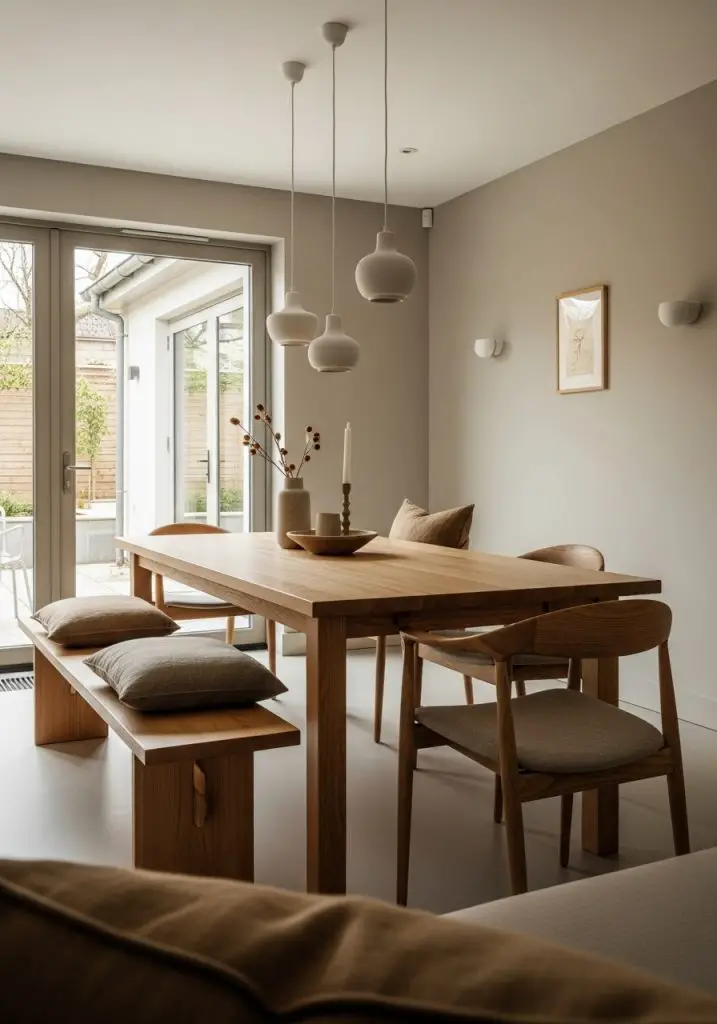
Instead of cramming your space with bargain finds, choose a few high-quality pieces that will last. Japandi rewards craftsmanship and durability.
A well-made solid wood dining table or a handwoven rug will outshine (and outlast) any trend piece.
17. Keep It Flexible
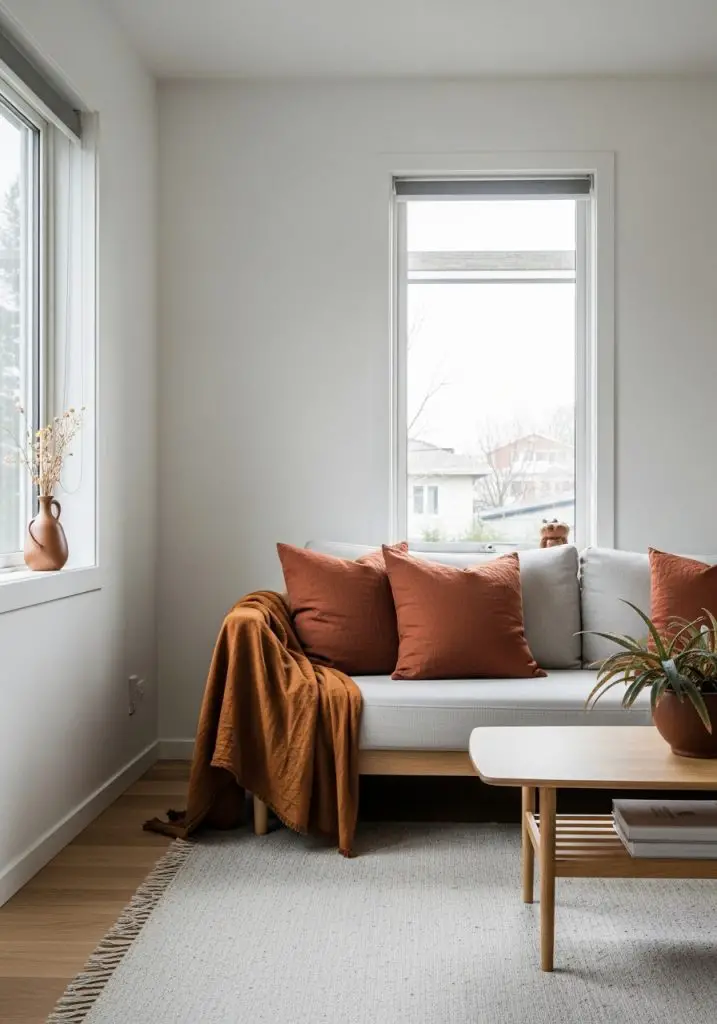
A Japandi living room isn’t frozen in time. Swap in seasonal textiles, move plants around, or rotate art. The core principles — simplicity, warmth, natural elements — stay the same, but you can keep it fresh.
Why This Works
A Japandi living room works because it’s balanced. The minimalism keeps things visually calm, while the Scandinavian warmth ensures it still feels inviting. It’s basically design therapy for your home.
So, next time you’re tempted by a fast-fashion furniture haul, ask yourself: Will this earn a permanent spot in my Japandi space? If not, you already know the answer.

With over 15 years of experience in residential design, [Author Name] specializes in creating stylish, functional spaces that feel like home. Her work has been featured in Better Homes & Gardens and Architectural Digest, and through HouzGem, she shares practical tips and inspiration to help readers transform their living spaces with confidence and creativity.

